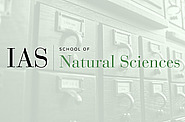Joint IAS Princeton University Astrophysics Colloquium
Apr
05
2016
Institute for Advanced Study/Princeton University Joint Astrophysics Colloquium
Coronal Heating and Solar Wind Acceleration: The roles of MHD turbulence and fast reconnection
Marco Velli
11:00am|Princeton University, Peyton Hall, Room 145
Mar
29
2016
Institute for Advanced Study/Princeton University Joint Astrophysics Colloquium
The Most Common "Peculiar" Supernova
Ryan Foley
11:00am|Princeton University, Peyton Hall, Room 145
Mar
22
2016
Institute for Advanced Study/Princeton University Joint Astrophysics Colloquium
The Hidden Monsters: Obscured AGN in the era of NuSTAR and WISE
Ryan Hickox
11:00am|Princeton University, Peyton Hall, Room 145
Mar
15
2016
Institute for Advanced Study/Princeton University Joint Astrophysics Colloquium
The Journey of High-Energy Photons in Blazar Jets
Lorenzo Sironi
11:00am|Princeton University, Peyton Hall, Room 145
Mar
08
2016
Institute for Advanced Study/Princeton University Joint Astrophysics Colloquium
A Massive Gravity Primer
Rachel A Rosen
11:00am|Princeton University, Peyton Hall, Room 145
Mar
01
2016
Institute for Advanced Study/Princeton University Joint Astrophysics Colloquium - TITLE ADDED
Pushing the Limits of Remote Spectroscopy to Infer Planetary Surface Compositions
James Wray
11:00am|Princeton University, Peyton Hall, Room 145
Feb
23
2016
Institute for Advanced Study/Princeton University Joint Astrophysics Colloquium
Observations of Quasar Feedback
11:00am|Princeton University, Peyton Hall, Room 145
Feb
16
2016
Institute for Advanced Study/Princeton University Joint Astrophysics Colloquium
Young Star Fundamentals and Surprises
Lynne Hillenbrand
11:00am|Princeton University, Peyton Hall, Room 145
Feb
09
2016
Institute for Advanced Study/Princeton University Joint Astrophysics Colloquium
In the Ring with Circinus X-1 - a Multi-round Find to Understand a Stubbornly Unusual X-ray Binary
Sebastian Heinz
11:00am|Princeton University, Peyton Hall, Room 145
Feb
02
2016
Institute for Advanced Study/Princeton University Joint Astrophysics Colloquium
Discovering and Characterizing Exoplanets with High-Contrast Spectroscopy
Timothy Brandt
11:00am|Princeton University, Peyton Hall, Room 145
